List of Authors
>>About this blog
Recent blog post
|
[Hanes]
February 8, 2019 14:00
Hello. I'm a new correspondent (Hanes) 
As you can see when you look into the department stores in Ginza and Nihonbashi, Valentine's Day is approaching!
Cute sweets are lined up in stores, including overseas chocolates that you can't usually buy.
In recent years, there has been a growing tendency for women to buy slightly luxurious chocolates for themselves.
I feel that chocolate variations are becoming more and more abundant.

(Purchased at Matsuya Ginza 8F. It is a women's favorite royal road and Instagrammable ◎)
There are many delicious chocolate shops in Chuo-ku, so I can't introduce them.
This time, I would like to introduce some heart spots in Chuo-ku that you can enjoy regardless of men and women of all ages.
In addition to Instagram, you may be happy if you visit ! !
■Ginza area
・GINZA SIX Rooftop Garden (Ginza 6-10-1)
I introduced it in the first article after my correspondent debut.
Hearts can also be enjoyed from the rooftop garden  (where is it?) (where is it?)
It is a heart spot that seems known and actually is not well known yet.
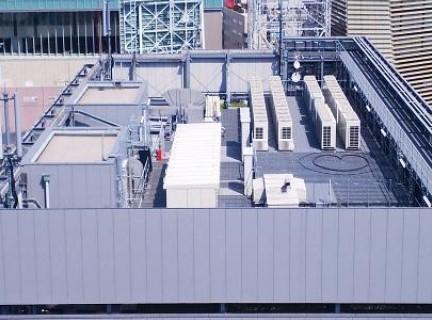
[Related Articles]
Hanes "Prayer for love in Ginza in spring!"
・Tenshodo Ginza Main Store (Ginza 4-3-9)
As you all know, there is a cute angel at the corner of this jewelry shop.
This is the work of sculptor Asahiko Yamada, which was set up during the renewal of the Tenshodo in 1997.
As the correspondent seniors have often introduced, wearing a Santa cap depending on the season.
It is a great photo spot for both Japanese and overseas.
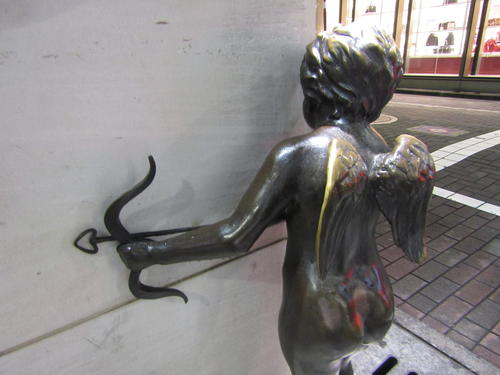
(Even if you become a familiar angel, you will take a picture every time you pass nearby.)
Well, you are such an angel, but did you know what you have?
I think you can imagine someone with good intuition, but yes. It's a heart arrow!
I've heard the story that "stroking your head will make love."
Please check this heart when you stroking your head.
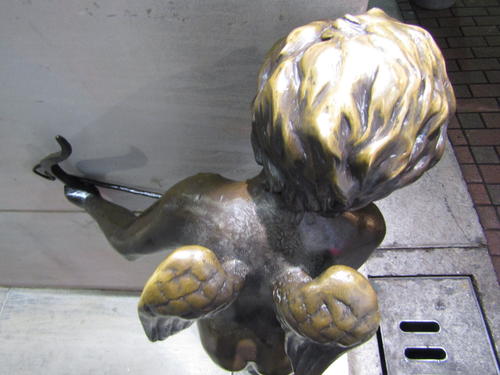
(The angel's head tells us that many people have been stroking.)
[Related Articles]
Dimini ☆Mr. Cricket "DESTINY Kamakura Monogatari and Tenshodo"
"Isn't it cold even though spring?"
・Chuo-dori (Ginza-dori)
In fact, heart can now be seen on the main street of Ginza!
Its identity is the leaves of the street tree "Katsura"
Unfortunately, I can't see this season, but I'd like to go see it when it gets warmer.
[Related Articles]
Usako Tsukuda "The street tree on Ginza Street becomes" wig ""
Dimini ☆Mr. Cricket "Replanting street trees on Ginza Chuo-dori"
・Place name sign (This time, we will use a photo of Ginza 3-chome on behalf of.)
This is a "hidden heart" that is a little nice if you find it.
It may be a little overdoing, but did you find it?
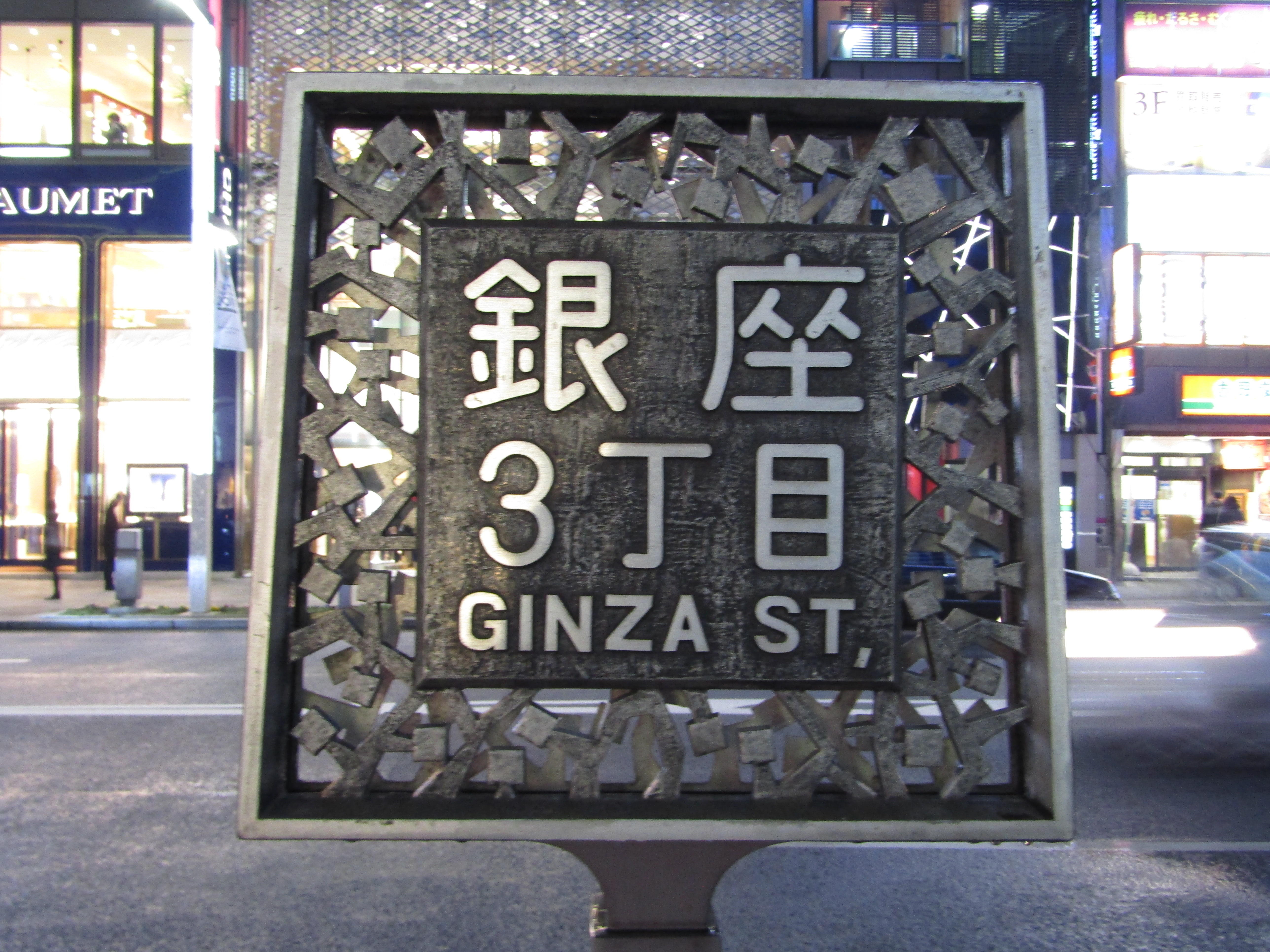
The answer is here!
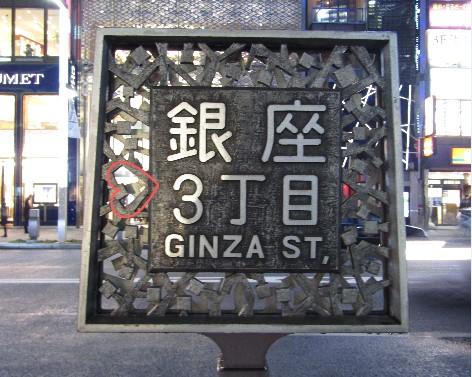
In addition, the heart may be hidden in such places and places that pass sideways many times.
■Tsukiji area
・Tsukiji Honganji (3-15-1 Tsukiji)
It may be surprising, but there is also something like a heart here.
You can see it all over the premises, including main hall.
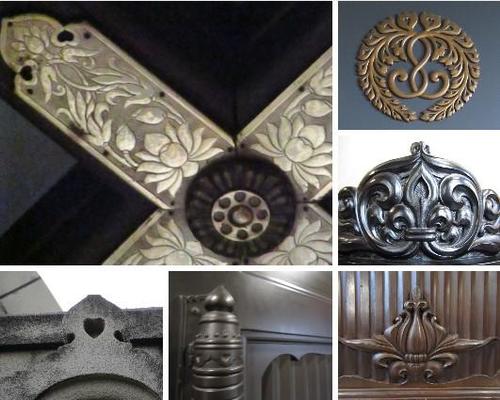
Well, the reason why I dared to write "like a heart".
In fact, this is not a heart, it is called "Inome".
Since ancient times, it has been used in shrines and temples in the sense of amulet and invitation.
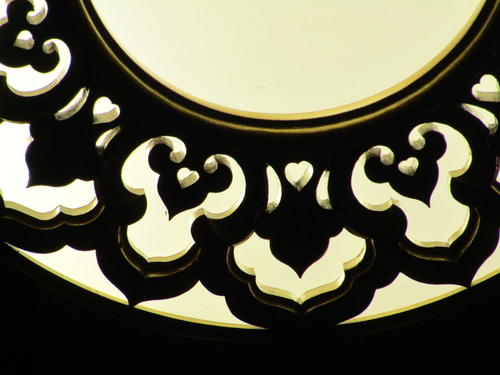
And the name "Inome" is literally derived from "Inoshino eyes".
This year is the year of the boar, so why not look for Inome when visiting shrines and temples?
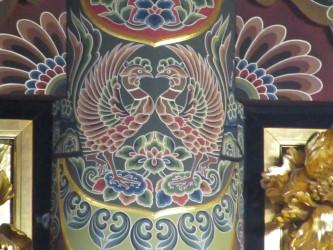
■Harumi area
・Harumi Wharf
I haven't been able to see it yet, but there seems to be a spot where you can see a series of hearts here.
That's the self-proclaimed “power spot that calls happiness” introduced by senior correspondent George Mayame!
I want to put this on Instagram.
For more information, please refer to the following article.
By the way, I have introduced six heart spots, how was it?
I hope there is also one place where you can think, "I want to go here!"
Because of the Valentine's season, I came to a department store to shop.
Do you not go around heart spot in Chuo-ku?
[May rain George]
February 6, 2019 09:00
 The other day, I got two books published by Chuo-ku, so I will introduce them. The other day, I got two books published by Chuo-ku, so I will introduce them.

1."Bridge of Chuo-ku, Hashizume Plaza-Chuo-ku Modern Bridge Survey-"
(Edited and issued by the Chuo-ku Board of Education in 1998 / ¥1,900 (at the time of issuance))
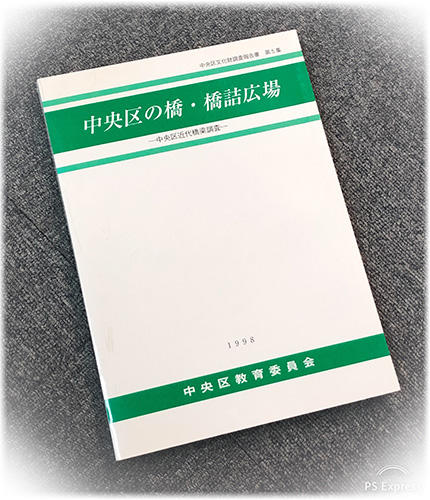
 I've written on this blog before, but I, May Rain George likes an unrivaled bridge. The spiritual man says that my ancestors were bridge craftsmen (surveying and design). I've written on this blog before, but I, May Rain George likes an unrivaled bridge. The spiritual man says that my ancestors were bridge craftsmen (surveying and design).

 "Chuo-ku Bridge / Hashizume Plaza-Chuo-ku Modern Bridge Survey-" was shown by the owner of a long-established restaurant acquaintance in Ningyocho. When I contacted the ward office, it was already out of print. I really wanted it, so I found it online. Somethings in a very good condition were available cheaply. "Chuo-ku Bridge / Hashizume Plaza-Chuo-ku Modern Bridge Survey-" was shown by the owner of a long-established restaurant acquaintance in Ningyocho. When I contacted the ward office, it was already out of print. I really wanted it, so I found it online. Somethings in a very good condition were available cheaply.
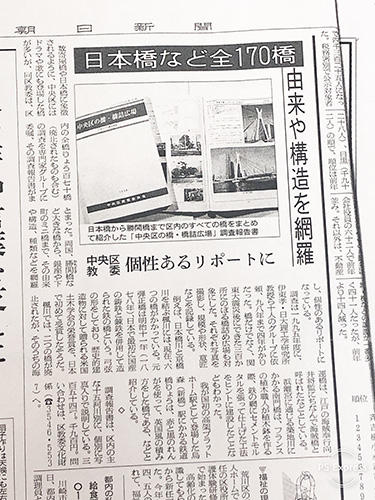
▲At the time of publication, it was introduced in the Asahi Shimbun.

 As described in the "Chuo-ku Cultural Properties Survey Report Vol. 5", this report investigates all bridges in Chuo-ku from a professional standpoint of modern bridges built from the Meiji era to the early Showa era. It is. As described in the "Chuo-ku Cultural Properties Survey Report Vol. 5", this report investigates all bridges in Chuo-ku from a professional standpoint of modern bridges built from the Meiji era to the early Showa era. It is.
 The contents are broadly divided into <Part 1 length / analysis> <Part 2 ledger> and <Part 3 material>. In the first part, we analyze bridges in Chuo-ku from various perspectives, such as time-specific, bridge design characteristics, earthquake disaster and reconstruction. The second part summarizes the history, characteristics, and design of all bridges across each river, along with photographs and drawings. Part 3 summarizes the date of groundbreaking and completion, length, width, format, construction cost, etc. in a list. The contents are broadly divided into <Part 1 length / analysis> <Part 2 ledger> and <Part 3 material>. In the first part, we analyze bridges in Chuo-ku from various perspectives, such as time-specific, bridge design characteristics, earthquake disaster and reconstruction. The second part summarizes the history, characteristics, and design of all bridges across each river, along with photographs and drawings. Part 3 summarizes the date of groundbreaking and completion, length, width, format, construction cost, etc. in a list.
This report on about 360 pages, including A4 size and color pages, contains photographs of the bridge that are currently reclaimed by the river and only the name of the bridge remains, and photographs of the bridge before it was newly rebuilt and its surroundings. I think that it has increased its presence as a valuable historical material.
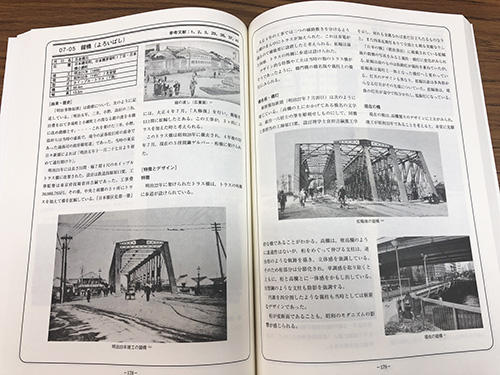
▲Armor Bridge page
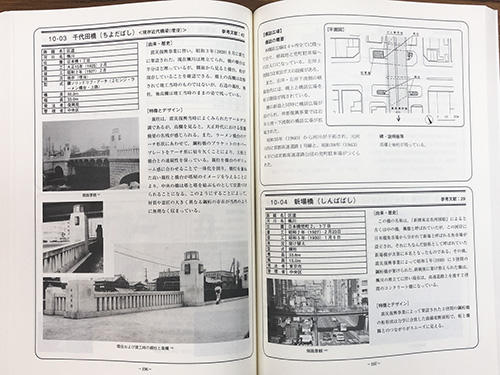
▲Chiyodabashi and Shinbabashi pages

▲Shipping Bridge (Kaedegawa) ▲Former Shinohashi (Sumida River)

▲Mihara Bridge (Sansanmabori) ▲Sukiya Bridge (outer moat)

2."Walking in Chuo Ward---Visit Historic Sites and History-" 9 books
(Edited and published by the Public Relations Office, Chuo-ku Planning Department)
 The second book is "Walking in Chuo Ward--Visit Historic Sites and History-". This is a new book version of the "Walking in the Ward", which was serialized in the public relations paper of Chuo-ku from 1985 to 2010, which has been further enhanced. After the first volume was published in 1988, it was published in the world every few years, two and three volumes, and completed in 2013 by the publication of the ninth volume (final volume). The second book is "Walking in Chuo Ward--Visit Historic Sites and History-". This is a new book version of the "Walking in the Ward", which was serialized in the public relations paper of Chuo-ku from 1985 to 2010, which has been further enhanced. After the first volume was published in 1988, it was published in the world every few years, two and three volumes, and completed in 2013 by the publication of the ninth volume (final volume).
 It is "Chuo Mayor" that writes "First" at the beginning of each book, but I also respect that Mr. Hidehide Yada has been serving as mayor by himself for the past 25 years of publication of these nine books. I want to show it. It is "Chuo Mayor" that writes "First" at the beginning of each book, but I also respect that Mr. Hidehide Yada has been serving as mayor by himself for the past 25 years of publication of these nine books. I want to show it.
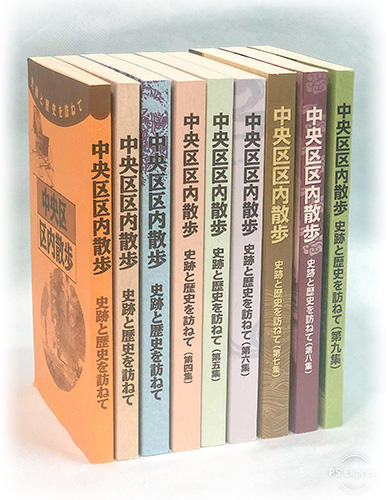
▲"Walking in Chuo Ward"

 This is still on sale and can be purchased at the Information Disclosure Corner on the first floor of the Chuo-ku Ward Office (9 totals ¥ 4,730). I am not from Chuo-ku and do not live or live, but every time I turn the page, there are new discoveries, fun and very study. This is still on sale and can be purchased at the Information Disclosure Corner on the first floor of the Chuo-ku Ward Office (9 totals ¥ 4,730). I am not from Chuo-ku and do not live or live, but every time I turn the page, there are new discoveries, fun and very study.
 The contents of each volume are as follows. (Each volume is about 160 to 260 pages.) The contents of each volume are as follows. (Each volume is about 160 to 260 pages.)
Volume 1 (500 yen) “One year in downtown”, “Cityscape”, “Living”, “Civilization and enlightenment”, “Literature Path”
Volume 2 (500 yen) "Kyomi of the Four Seasons", "Memor of Edo", "Toward modernization", "Food of Culture", "Bridge and Liveliness"
Volume 3 (500 yen) "Around Monuments and Cultural Properties", "Civilization and enlightenment Urabananashi", "Kaori of Arts and Culture", "Metales of the City", "Life of Citizens" and "Dietary Life"
Volume 4 (500 yen) "Become a town of Edo", "Brightness of Edo culture", "Ashidori of Kaika", "Original scenery of modern literary arts", "Activity of women", "Understanding town"
Volume 5 (400 yen) "Edo-fetal movement to modern times", "Encounter with foreign countries", "Theatrical protagonists", "The World of Literary", "City-Flowing Memory", "Memory Arata"
Volume 6 (400 yen) "Start to modern times", "Photographers of Kaikai", "Literature born by Nihonbashi", "People around Kaikaikan", "People of Kaikai", "Kafu Nagai and Chuo-ku", "Tsukiji Small Theater"
Volume 7 (600 yen) "Chuo-ku Haiku Group Statue", "Freedom Baron Satsuma Satsuma Jirohachi", "Playwright Torahiko Koori who died in Western Europe", "People living in water"
Volume 8 (700 yen) "Nihonbashi", "Yumeji Eternal Woman Hikono Kasai", "Sumida River Water Range", "Chuo-ku Seen by Foreigners", "Tsukiji 350 Years"
Volume 9 (630 yen) "Chuo-ku seen by foreigners", "Ginza in the early Showa era", "Ginza during the war"

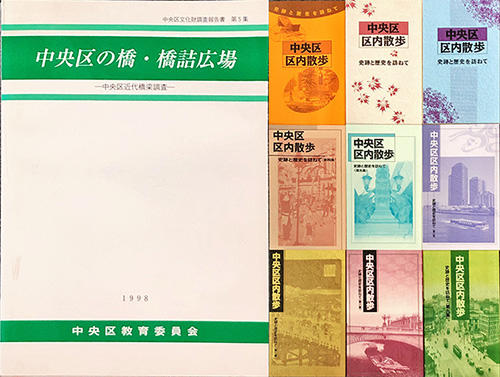
[often slap]
January 30, 2019 09:00
On May 1, this year, the Crown Prince was enthroned as the new Emperor and switched to a new era.
In the streets, "The Last of Heisei"...It was around this time when I often see and hear the word ""
Did you know that there are several streets in Chuo-ku with the name of the era?
Today, of such "the street with the era", those passing through Chuo-ku are passed.
I would like to introduce it in two parts, dating back to Heisei.
■Part 1 "Heisei-dori"
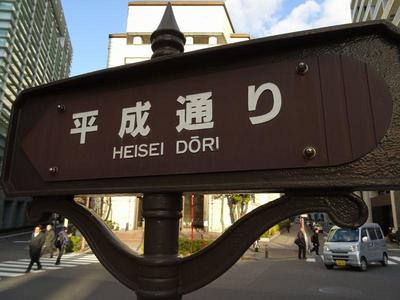
Nihonbashi Kabutocho No.2 (Amibashi Minamizume) 2-15 Tsukiji (intersection with Harumi-dori St.)
It's a street running parallel to the west side of Shin-ohashi-dori St.
I don't know why it became the name "Heisei-dori"...。
(I would like somebody to explain to you!)
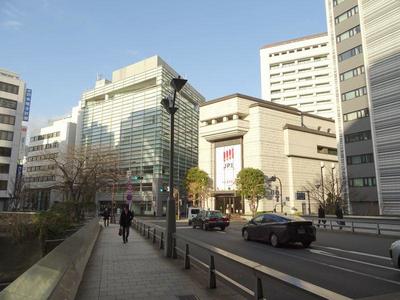 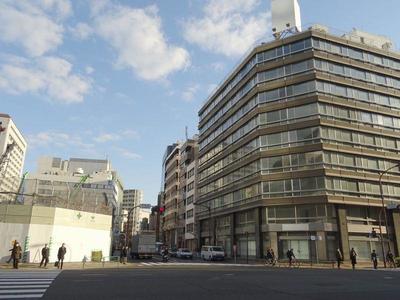
In Kabuto-cho and Kayabacho near the starting point, the Tokyo Stock Exchange (Photo 1) and the Tokyo Stock Exchange (Photo 1).
In addition to the auxiliary shrine Hie-jinja Shrine, it reminds me of the period of high economic growth.
Office buildings (second photo) are lined up.
If anything, there is a taste of "Showa", but it is also a taste of "Showa".
Redevelopment of the area has begun beyond the era of Heisei.
I feel the flow of the times.
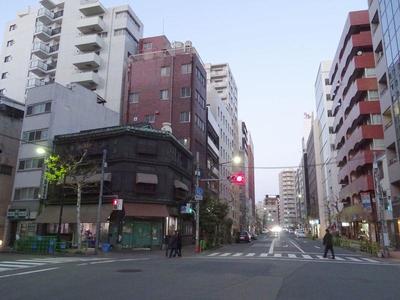
Tsukiji near the end point is also the Historic buildings selected by Tokyo.
There is a building of "Miyakawa Shokutori Chicken Egg" (built in 1929).
In addition, there are historic sites along the road, such as the site of Shintomiza and the site of Hoshu Katsuragawa Yashiki.
While saying "Heisei", it has become a way to have various eras.
■No. 2 Showa-dori
Connecting Shimbashi (Shimbashi 1, Minato-ku) to Ozeki Yokocho (5, Negishi, Taito-ku).
It is a wide street between Shimbashi and Ueno, including in Chuo-ku.
It runs parallel to the east side of Chuo-dori.
The Heisei-dori just mentioned is parallel across the Metropolitan Expressway.
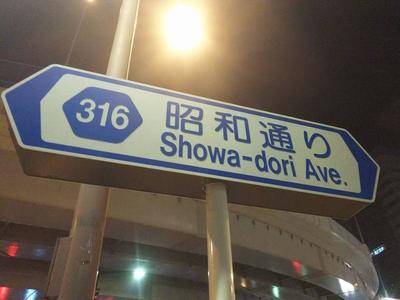 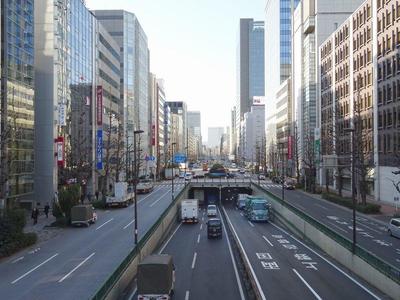
This road was constructed after the Great Kanto Earthquake that occurred in 1923 (Daisho 12).
This symbol road was created as a centerpiece of reconstruction city planning.
In 1931 (Showa 6), when the era was just changed to Showa.
Since it was completed, it was nicknamed "Showa-dori".
It was a street that symbolized the new era of Showa.
Its wide width (44 meters) has plenty of street tree belts and sidewalks.
It is also a remnant planned as a park street.
(By the way, at the beginning of the concept, it was planned with a width of 108 meters.
It's more than twice the current width!)
Looking for an old photo in the library, when it was completed, it was between the upper and lower lanes.
It seems that there were two rows of trees and sidewalks. (Partial as parking lots)
It seems to have been used.
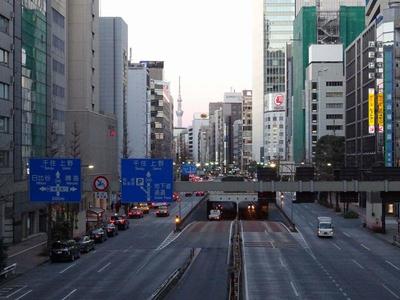 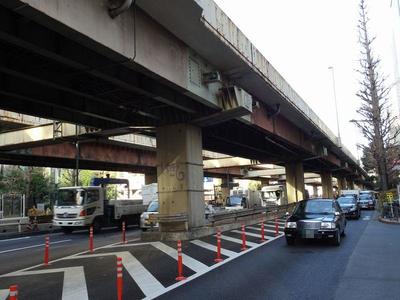
The current figure is a section with three or more lanes one way, an underpass dedicated to passing traffic underneath.
In the north of Edobashi, the underground parking lot connected from there is an overpass of the Metropolitan Expressway overhead....
The structure emphasizes functional aspects, handling a large amount of automobile traffic as an aorta in the city center.
In a sense, it has become a road that symbolizes the Showa era, especially the post-war era.
Nowadays, it is often thought that there are no sights or highlights just because there are many streets.
This Showa-dori is located along the Nihonbashi Post Office (the birthplace of mail), a monument derived from Betta City, and a monument derived from the city.
Historic sites such as the ruins of Kano Art Juku and like the Nihonbashi Diamond Building (formerly Edobashi Warehouse Building).
In addition to the famous buildings
In Nihonbashi Honmachi, there are Ozu Historical Museum and Daiichi Sankyo Medicine Museum.
There is also a spot.
If you walk separately from Heisei-dori and Showa-dori from the viewpoint of street, you can see that you can walk around.
There seems to be a different kind of fun again!
By the way, next time I would like to go back to the Taisho era.
Some people think, "There is no Taisho-dori!?"
Actually, when you go back to the past, there was also Taisho-dori in Chuo-ku.
I'm looking forward to it!
[Shiba Inu]
January 29, 2019 14:00
It is a topic that has just changed the year and is too early, but it is an introduction of the end-of-year purchase at Tsukiji Outer Market. It seems that there are many people who want to go but do not understand well, so it is easy, but we will deliver the situation of the site and how to enjoy it.
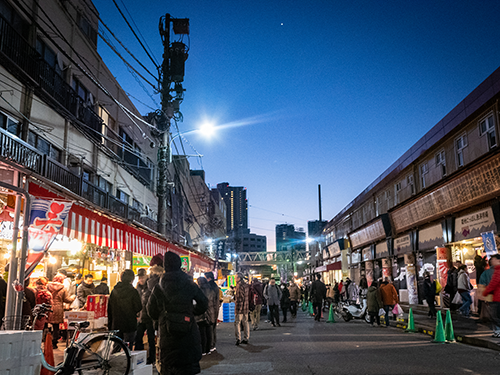
The date is 12/30. There are plenty of items on sale, from seafood, meat, seaweed, roast beef, kejan and chestnut kinton, a restaurant purveyor to daily necessities. Each store opens around 5 o'clock in the morning, so you can move quickly if you go out of the hall just before and grab the intuition of each street while wandering around. The actual outside is not so big. There are a lot of shops there.
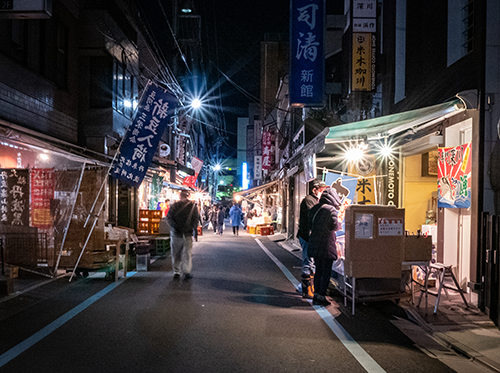
It is very crowded after the sun rises, so we recommend the time from early morning to sunrise. You don't have to worry about selling out. Also, there is a mysterious uplift that a large number of people are on the market during this time. It's fun to come to Yokai's night market. There is a parking lot, but it's congested, so it might be better to leave to get there early or ask a driver.
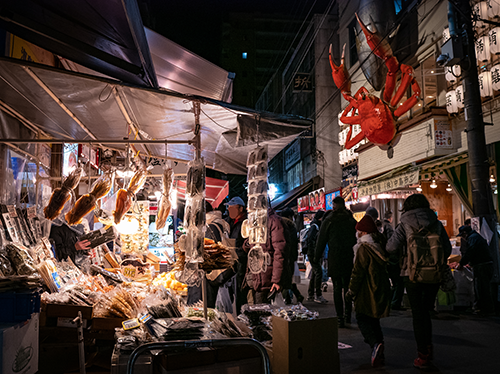
In addition to the purchase, there are also pleasures of eat-in. There are a wide variety of things such as Kuansu sushi and ramen at dawn. The complex Tsukiji Fish Bank Restaurant Floor is open at 7:00 in the morning. There is also a delicious shop here!
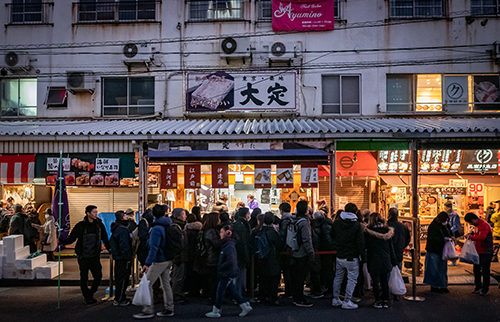
Every egg-yaki shop is a large line of prosperity, but there are shops that can be bought early in the morning even if you don't make a reservation. It takes about 10 to 20 minutes to line up. As expected, the shop is also quick! The 100 yen egg skewers are sold normally.
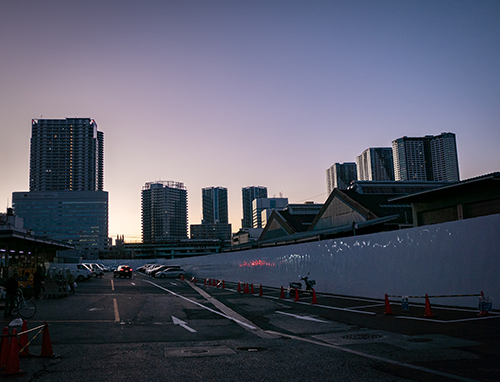
At present, the hall is completely closed and cannot be entered. Until last year, I was free to enter and exit, and I was able to see the sunrise rising to Tokyo Bay from the hall.
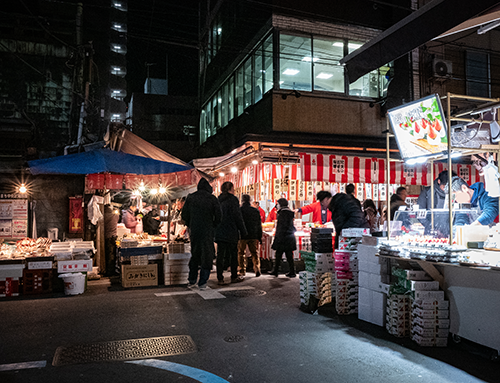
It is not recommended for those who are not good at crowded places because there are many crowds, but if you go early, you can enjoy watching around without stress. After shopping, I think it would be refreshing to go home after watching the sunrise rising at Namiki Inari Shrine, Kachidokibashi, Tsukiji Honganji, etc.
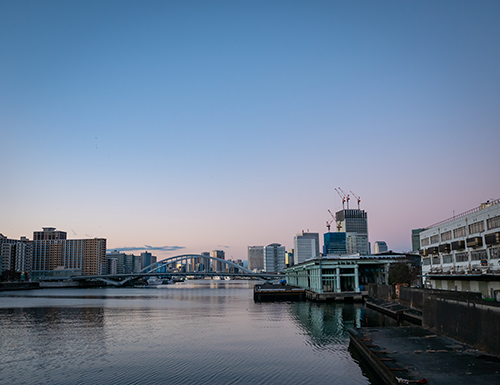
As mentioned above, it was a simple and rush, but it was an introduction of the year-end purchase at Tsukiji Outer Market. Please come and visit us at the end of 2019. It's fun!
The official website of Tsukiji Outer Market is available. → Here。
|
Links
|
![]()
![]()
![]()

![]() !
!![]() (where is it?)
(where is it?)![]()

![]()
![]()

![]()

![]()
![]()

![]()

![]()

![]()

![]()
![]()
![]()





















